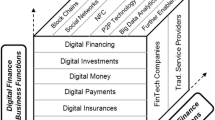Abstract
Billing and Revenue Management Systems (BRMS) represent a key enterprise application across the entire telecommunications industry. However, their inherent complexity makes them notoriously difficult to implement, meaning projects often either end in complete failure, or arrive late and overshoot budgetary costs. A clear understanding of the factors by which implantation success is measured will reduce the likelihood of these negative outcomes. This study therefore has two objectives: first to empirically validate an established conceptual model for IS success (developed by DeLone and McLean) in a BRMS context; specifically, we applied structural equation modelling techniques to validate the model using data obtained from key informants from several telecom service providers. We then prioritize our technical findings from the study, with a view to more targeted use of billing and revenue resources and equally important, consider the potential role of BRMS in driving pricing policy and dynamic product offerings. The novelty of our work lies in the adaptation of an existing model for predicting and measuring IS success at organizational level and the ensuing benefits accruing to companies beyond mere use of BRMS as a tool for managing accounts receivable.


Similar content being viewed by others
References
Avienzis, A., J.C. Laprie, B. Randall, and C. Landwehr. 2004. Basic Concepts & Taxonomy of Dependable & Secure Computing. IEEE Transactions on Dependable and Secure Computing 1 (1): 11–33.
Avison, D., and D. Wilson. 2002. IT Failure and the Collapse of One.Tel. In Information Systems: The e-Business Challenge, ed. R. Traunmuller, 31–46. New York: Springer.
Cadzow, J. 2001. That Rich Bloke. The Australian, 4 August.
Chin, W.W. 1998. The Partial Least Squares Approach to Structural Equation Modelling. In Methodology for Business and Management. Modern Methods for Business Research, ed. G.A. Marcoulides, 295–336. New Jersey: Lawrence Erlbaum Associates Publishers.
DeLone, W.H., and E.R. McLean. 2003. The DeLone and McLean Model of Information Systems Success: A Ten-Year Update. Journal of Management Information Systems 19 (4): 9–30.
Fornell, C., and D.F. Larcker. 1981. Evaluating Structural Equation Models with Unobservable Variables and Measurement Error. Journal of Marketing Research 18 (1): 39–50.
Goldman, L. 2012. Telecoms Software: Software Strategies that Impact Operator Business Results. http://www.analysysmason.com/PageFiles/35474. Accessed 16 Jan 2018.
Hair, J.F., G.T. Hult, M. Sarstedt, and C. Ringle. 2013. A primer on Partial Least Squares Structural Equation Modeling (PLS-SEM), 2nd ed. California: Sage Publication.
He, W., and L. Da Xu. 2014. Integration of Distributed Enterprise Applications: A Survey. IEEE Transactions on Industrial Informatics 10 (1): 35–42.
Hunter, J.M., and M.E. Thiebaud. 2003. Telecommunications Billing Systems: Implementing and Upgrading for Profitability. New York: McGraw-Hill.
Jahanzeb, S., and S. Jabeen. 2007. Churn Management in the Telecom Industry of Pakistan: A Comparative Study of Ufone and Telenor. Journal of Database Marketing & Customer Strategy Management 14 (2): 120–129.
Lin, Q. 2007. Mobile Customer Clustering Analysis Based on Call Detail Records. Communications of the IIMA 7 (4): 95–100.
Little, A.D. 2017. Reimagining Telco Operations in a Hyper-Digital World. http://www.adlittle.com/sites/default/files/viewpoints/adl_reimagining_telco_operations_in_a_hyper-digital_world_0.pdf. Accessed 30 July 2018.
Lowry, P.B., G.G. Karuga, and V.J. Richardson. 2007. Assessing Leading Institutions, Faculty, and Articles in Premier Information Systems Research Journals. Communications of the Association for Information Systems 20 (16): 142–203.
Martinez-Ruiz, A., and T. Aluja-Banet. 2009. Toward the Definition of a Structural Equation Model of Patent Value: PLS Path Modelling with Formative Constructs. REVSTAT Statistical Journal 7 (3): 265–290.
McKinney, V., Y. Kanghyun, and F.M. Zahedi. 2002. The Measurement of Web-customer Satisfaction: An Expectation and Disconfirmation Approach. Information Systems Research 13 (3): 296–315.
Niebuhr, J., Späne, A., Schröder, G., and Gröne, F. 2010. Evolution or Revolution? Strategies for Telecom Billing Transformation. https://www.strategyand.pwc.com/media/file/Evolution_or_Revolution.pdf. Accessed 12 Oct 2017.
Park, K.W., J. Jaesun Han, J.W. Chung, and K.H. Park. 2013. A Mutually Verifiable Billing System for the Cloud Computing Environment. IEEE Transactions on Services Computing 6 (3): 300–313.
ORACLE. 2015. Communications Billing and Revenue Management Concepts. Oracle Communications Billing and Revenue Management Documentation, Release 7.5. https://docs.oracle.com/cd/E16754_01/doc.75/e23300/toc.htm. Accessed 2 Oct 2017.
Rovinelli, R.J., and R.K. Hambleton. 1977. On the Use of Content Specialists in the Assessment of Criterion-Referenced Test Item Validity. Dutch Journal of Educational Research 2: 49–60.
Solis, B. 2018. In Pursuit of Relevance. Digital Transformation, 11 April. https://www.briansolis.com/2018/04/in-pursuit-of-relevance/. Accessed 9 July 2018.
Tam, M.C.Y., and V.M.R. Tummala. 2001. An Application of the AHP in Vendor Selection of a Telecommunications Systems. Omega International Journal of Management Science 29: 171–182.
Tangsuwan, A., and Mason, P. 2017. Key Success Measures for Billing and Revenue Management System in Thailand. Paper Presented at IEEE 3rd International Conference on Engineering, Technologies & Social Sciences (ICETSS 2017), 07–08 August, Bangkok, Thailand.
TM Forum. 2014. Frameworx Best Practice: Business Metrics Scorecard (BMS): Business Metrics Solution Suite 21. New Jersey: TM Forum office.
Venkatesh, V., M.G. Morris, G.B. Davis, and F.D. Davis. 2003. User Acceptance of Information Technology: Toward a Unified View. MIS Quarterly 27 (3): 425–478.
Westland, J.C. 2010. Lower Bounds on Sample in Structural Equation Modeling. Electronic Commerce Research and Applications 9 (6): 476–487.
Author information
Authors and Affiliations
Corresponding author
Rights and permissions
About this article
Cite this article
Tangsuwan, A., Mason, P. Towards improved understanding of success criteria for telecoms billing & revenue management systems: from implementation to practical value. J Revenue Pricing Manag 18, 256–265 (2019). https://doi.org/10.1057/s41272-018-00165-3
Received:
Accepted:
Published:
Issue Date:
DOI: https://doi.org/10.1057/s41272-018-00165-3




